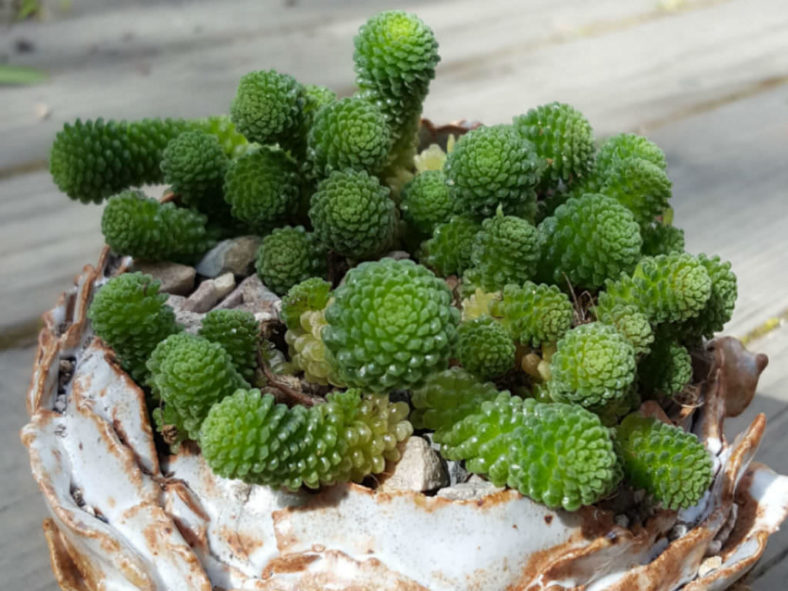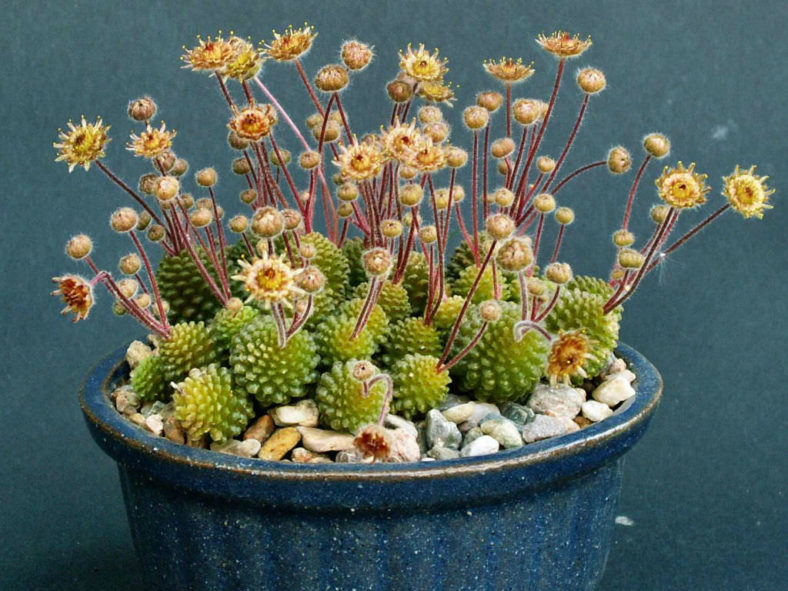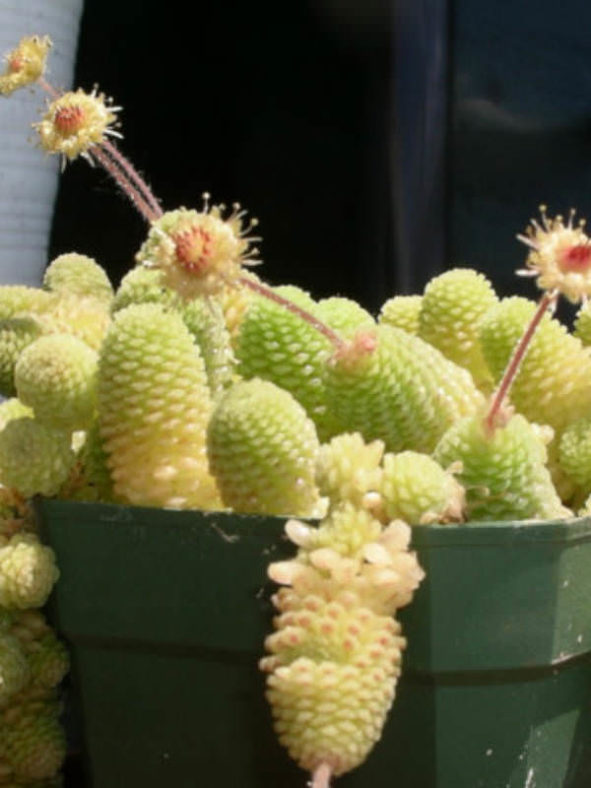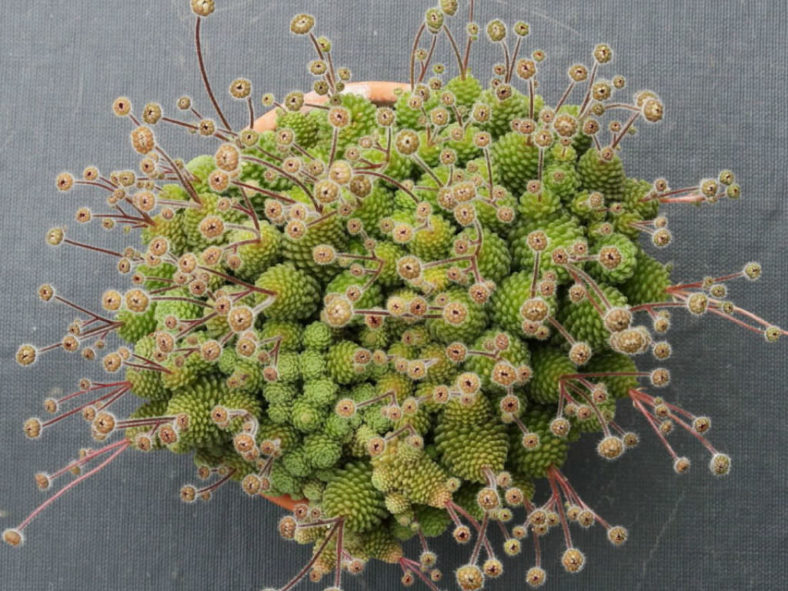Scientific Name
Monanthes polyphylla (Aiton) Haw.
Synonym(s)
Monanthes polyphylla subsp. polyphylla, Petrophyes polyphylla, Sempervivum monanthes, Sempervivum polyphyllum
Scientific Classification
Family: Crassulaceae
Subfamily: Sedoideae
Tribe: Sedeae
Subtribe: Sedinae
Genus: Monanthes
Etymology
The specific epithet "polyphylla" (pronounced "pol-ee-FIL-uh") means "many-lived" and refers to the small rosettes of this species with many tiny leaves.
Origin
Monanthes polyphylla is native to the Canary Islands.
Description
Monanthes polyphylla is an attractive, much-brunched succulent with slender, creeping stems that bear small, cone-like rosettes of green, cylindrical, or club-shaped leaves. It can grow up to 5 inches (12.5 cm) tall and form a dense clump as it matures. The rosettes can reach a diameter of only 0.8 inches (2 cm).
The unusual flowers are yellow to orange or purplish and appear at the end of stalks that can grow up to 8 inches (20 cm) long. The flowering occurs from spring to summer.

Subspecies of Monanthes polyphylla
- Monanthes polyphylla subsp. amydros
- Monanthes polyphylla subsp. polyphylla
How to Grow and Care for Monanthes polyphylla
Hardiness: USDA hardiness zones 11a to 11b: from 40°F (4.4°C) to 45°F (7.2°C).
Monanthes are easy to grow, even in very small pots. They thrive in hot, sunny locations and well-drained soil. The only conditions that can harm these plants are extreme cold, intense heat, excessive sun exposure, and overwatering.
During the winter, they benefit from a rest period, so it's important to reduce watering to a bare minimum. The plants will start to grow in early spring, at which point you can gradually increase watering until late spring, when they should be in full growth. During the growing season, water them regularly, ensuring that the pots can drain and do not sit in standing water.
While Monanthes may attract various insects, healthy plants are typically pest-free. Repot them every 2 to 3 years to check the plant's health and to provide a larger growing space, being careful not to damage their sensitive roots.
Learn more at How to Grow and Care for Monanthes.
Links
- Back to genus Monanthes
- Succupedia: Browse succulents by Scientific Name, Common Name, Genus, Family, USDA Hardiness Zone, Origin, or cacti by Genus
Photo Gallery
Click on a photo to see a larger version.


